Hi Susun,
I dabbled with Nettle and Mullein herbal infusions two years ago but am concerned about safety because herbs I’ve thought were safe seemed to affect me badly. For example, goldenseal is supposed to be very soothing to the intestines but it just made mine worse and I have not recovered yet, two years later. Are there any basic safety guidelines for how to use herbs and what to look out for?
Susun’s response:
Plants feed us, clothe us, house us, heal us, and kill us. There’s no way around it, when you use herbs, you need to be alert and aware. Here are some ways to be sure you’re using herbs safely:
- Identify all plants you intend to use by botanical name (e.g., Leonurus cardiaca). Only buy herbs that are labeled with the botanical name. The botanical name is specific to only one plant, while common names overlap and vary. “Sage” refers to at least five plants in at least two different families, but Salvia officinalis only means garden sage.
- Use only one herb at a time. Learn all you can about that one herb. Read books; experiment on yourself, others, pets; listen to your elders’ stories. If you discover that your herbal ally likes to work with partners, pair her up with other herbs one at a time.
- Seek out the worth of the weeds on your doorstep. Learn about, eat, or use as a remedy, one wild food/medicine that grows in your yard or nearby lot this year. When you make your own medicines and healing foods you eliminate one of the possible dangers of crude herb use: mistaken identity (or right label, wrong herb). Not that you can’t make mistakes, but you’re more likely to catch your own mistake than someone else’s. When you make your own medicines and healing foods, they are fresh, full of energy, and in tune with you and your environment. You’ll also feel better as you become more aware of the vitality and abundance of nature expressing herself everywhere.
- Begin with gentle nourishing and tonifying herbal infusions and vinegars. Watch carefully for side effects during the first 24 hours the first time you use any new plant. Don’t worry if it takes your system a couple of tries to figure out how to digest a new food/herb; that’s normal. Use herbal tinctures after you have some grounding in the use of herbs as foods and infusions. Start with the smallest recommended dose and build up slowly if needed.
- Build up a foundation of trust in the healing effectiveness of plants by using remedies for minor problems before tackling serious concerns.
- Gather or join a support group of people interested in self-care and home remedies and consult them when you feel uncertain.
- Respect the power of plants; those strong enough to act as stimulants, sedatives, and near-drugs (such as opium) affect the body and spirit in powerful ways and may be useful only in minute doses.
- Respect the unique individuality of every plant, every person, every situation.
- Remember that you become whole and healed in your own unique way, as you will. Plants can help in this process. People can help in this process. (Animals, too.) But each individual body/spirit does the healing/wholing itself. Don’t expect plants to be cure-alls.
- Respect the difference between herbs used in Step 3 (see 6 Steps of Healing column) — nourishing and tonifying herbs — and those used in Steps 4 and 5 — stimulating, sedating, and toxic herbs.
Nourishing herbs are the safest of all herbs; side effects are quite rare. Nourishing herbs may generally be taken in any quantity for any period of time. They are foods, just as leafy greens, garlic, and carrots are. They provide high-level nutrients, including vitamins, minerals, trace minerals, starches, simple and complex sugars, bioflavonoids, carotenes, and essential fatty acids (EFAs). Some nourishing herbs are: alfalfa, borage, chickweed, comfrey, elder berries, fennel, fenugreek, nettles, oatstraw, plantain, red clover, seaweeds, slippery elm, and violet.
Tonifying herbs act slowly in the body and have a cumulative, rather than immediate, effect. They are most beneficial when they are used in small quantities for extended periods of time. Side effects are slightly more common with tonics. (Note that many herbalists equate stimulating herbs with the tonics, leading to misuse and unwanted side effects.) The more bitter the tonic tastes, the less you need to take of it. Examples of tonics are: birch, black cohosh, blackstrap molasses, dandelion, dong quai, echinacea, ginseng, hawthorn, sarsaparilla, wild yam, and yellow dock.
Sedating/Stimulating herbs cause a wide variety of usually rapid reactions, some of which may be unwanted. Long-term use can lead to dependency, so sedating/stimulating herbs are best used in moderate doses for fairly short periods of time. Side effects are frequent; there may be loss of tone or a rebound/manic effect when the herb is no longer taken. Some parts of the person may be stressed in order to help other parts. Sedating / stimulating herbs include: catnip, cinnamon, ginger, hops, licorice, myrrh, passion flower, sage, skullcap, uva ursi, valerian, willow, and wintergreen.
Toxic herbs are potential poisons and potent medicines. They activate intense effort on the part of the body and spirit. Toxic herbs are taken in tiny amounts for very short periods of time. Unexpected side effects are common when toxic herbs are used without regard for their power. Increase your herbal knowledge and sense of security when contemplating use of a toxic herb by consulting other herbal references and several experienced herbalists. It is especially important to check on the possible side effects of toxic herbs if you are allergic to any foods or medicines. Some toxic herbs are: cayenne, goldenseal, poke root, rue, sweet clover (Melilot), and wormseed.
Green blessings, Susun Weed
Wise Woman Spiral © iStockphoto.com / Chuck Spidell | Birthing Woman © Dana Leggett

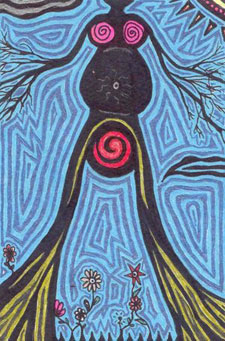

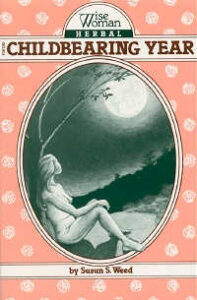
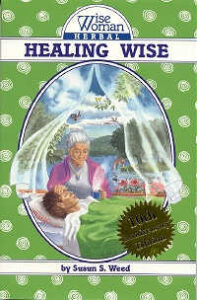

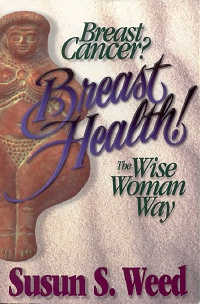
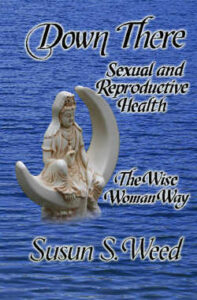
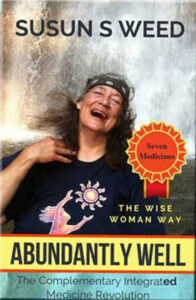



0 Comments